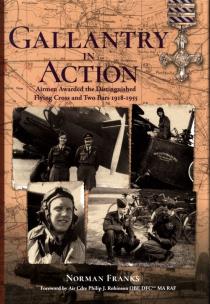- Regulamin
- Koszty dostawy
- Kontakt
- Dziś w ofercie 235 526 produktów
KSIĄŻKI
- Albumy
- Beletrystyka
- Biografie
- Dla dzieci i młodzieży
- Edukacja
- Ekonomia i biznes
- Ezoteryka
- Historia
- Informatyka
- Kalendarze
- Komiksy
- Kryminał i sensacja
- Kultura i sztuka
- Literatura faktu
- Literatura kobieca
- Literatura piękna
- Medycyna
- Nauka języków obcych
- Nauki humanistyczne
- Nauki przyrodnicze
- Nauki ścisłe
- Podręczniki
- Poradniki
- Prawo i administracja
- Przewodniki i podróże
- Psychologia
- Religia
- Sport
- Technika
- Zdrowie i uroda
ZABAWKI
- Artykuły dla niemowląt
- Bączki
- Bujaki i skoczki
- Ciągnij / pchaj
- Dla niemowlaka
- Grzechotki i gryzaki
- Karuzele i pozytywki
- Maty i centra zabaw
- Projektory i lampki
- Sortery i piramidki
- Zabawki
- Edukacyjne i kreatywne
- Figurki
- Klocki
- Lalki
- Pojazdy
- Pluszaki i maskotki
- Sport i rekreacja
- Zabawa w dom
- Zabawki drewniane
- Puzzle
- Do 200 elementów
- 201-500 elementów
- 501-1000 elementów
- Ponad 1000 elementów
- Puzzle 3D
ART. PAP
- Artykuły biurowe
- Artykuły piśmiennicze
- Bloczki i kartki samoprzylepne
- Dziurkacze
- Kalkulatory
- Nożyczki i nożyki
- Skoroszyty
- Teczki
- Wizytowniki
- Zszywacze
- Artykuły szkolne
- Akcesoria szkolne
- Modelowanie
- Notatniki i zeszyty
- Piórniki
- Plecaki i torby
- Pojemniki na śniadanie
- Pomoce naukowe
- Przybory matematyczne
- Przybory rysunkowe
- Upominki i gadżety
- Akcesoria do książek
- Artykuły balowe
- Breloki i zawieszki
- Drobiazgi, różności
- Kubki
- Oferta Świąteczna
- Papeteria, kartki i naklejki
- Skarpetki Many Mornings
- Upominki
GRY
MULTIMEDIA
- Audiobooki
- Beletrystyka
- Biografie i wspomnienia
- Dla dzieci i młodzieży
- Fantastyka
- Filozofia i religia
- Historia
- Literatura faktu i reportaż
- Poradniki
- Sensacja i kryminał
- Filmy DVD/BD
- Animowane
- Biograficzne
- Fantasy
- Horrory
- Komedie
- Romanse
- Science Fiction
- Sensacyjne / kino akcji
- Thrillery
- Muzyka CD
- Alternatywna
- Blues
- Dla dzieci
- Jazz
- Klasyczna
- Piosenka aktorska i poetycka
- Pop
- Rock
- Świąteczna i kolędy
- Akcesoria GSM
- Głośniki
- Kable i adaptery
- Klawiatury
- Myszy
- Słuchawki
PROMOCJE
ZDROWIE
LEGO
- multiszop.pl \
- KSIĄŻKI \
- Historia \
- Militaria

Gallantry in Action
Autor: Franks Norman
Wydawca:
Grub Street
ISBN:
9781911621287
EAN:
9781911621287
oprawa:
Twarda z obwolutą
format:
15.0x22.0cm
język:
angielski
liczba stron:
222
rok wydania:
2019
(0) Sprawdź recenzje
Opis produktu
Zasady bezpieczeństwa
When the Royal Flying Corps and the Royal Naval Air Service merged on 1 April 1918, to form the Royal Air Force, the new command needed to have its own gallantry medals to distinguish itself from the Army and the Royal Navy. Thus the new Distinguished Flying Cross came into being.
Not that this new award (along with the Distinguished Flying Medal for non-commissioned personnel) came into immediate use, but as 1918 progressed, awards that earlier might have produced the Military Cross or Distinguished Service Cross, became the Distinguished Flying Cross.
By the end of WWI a large number of DFCs and First Bars had been awarded, but only three Second Bars had been promulgated for First War actions. Before WWII erupted, only four more Second Bars had been awarded, for actions largely in what we would now call the Middle East. By the end of the WWII, awards of the DFC and First Bars had multiplied greatly, but only fifty Second Bars had been awarded (and Gazetted), making fifty-seven in all between 1918 and 1946. To this can be added three more, awarded post-WWII, between 1952-1955, making a grand total of sixty. Still a significantly small number of members of this pretty exclusive 'club'.
CENA:
33,43
zł
Cena detaliczna:
42,00 zł
20%
rabatu
Najniższa cena z ostatnich 30 dni: 33,43 zł
Produkt niedostępny
Uwaga!!!
Ten produkt jest zapowiedzią. Realizacja Twojego zamówienia ulegnie przez to wydłużeniu do czasu premiery tej pozycji. Czy chcesz dodać ten produkt do koszyka?


Wybierz wariant produktu
